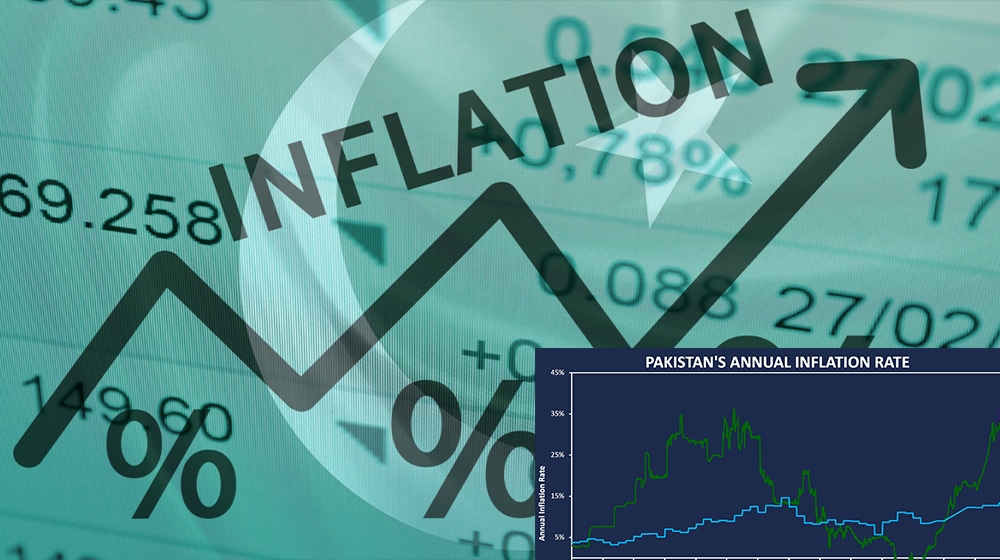Political instability tops among the drivers, such as increased repayment of external debt, falling exports, rising imports, and a decrease in remittance, which are causing a fall in foreign exchange reserves, says the inflation perception survey conducted by the Sustainable Development Policy Institute (SDPI).
Releasing the results of the Survey, the Executive Director of SDPI, Dr. Abid Qaiyum Suleri said, “71% of the respondents of the Inflation Perception Survey ranked the political instability on top, followed by 45% of the respondent who cited the increased repayments of foreign debt as the second, 44% marked declining exports, 34% mentioned the decrease in remittance, and 30% of the respondents identified rising imports as factors that are impacting the reserves.”
Quoting the respondents, Dr. Suleri said if the above indicators are improved, the foreign exchange reserves will improve too. He said that the Inflation Perception Survey in April 2023 was conducted nationwide using a structured questionnaire to collect quantitative data on participants’ perceptions of inflation, inequality, and subsidy distribution. Using random sampling techniques, the survey was conducted among 1200 sample sizes through telephonic and online interviews.
The respondents in the provinces (from 68% to 81%) identified political instability as the main cause. On falling exports, 48% of respondents from Sindh followed closely by Balochistan and Punjab viewed that exports decline is impacting the forex. Rising imports are a concern in all provinces, with percentages ranging from 25% in Punjab to 37% in Sindh.
Increased repayment of external debt is also a significant issue in all provinces, with Sindh having the highest percentage at 50%, followed by Khyber Pakhtunkhwa and Punjab. Finally, a decrease in remittances is observed in all provinces, with 36% in Punjab.
According to the inflation perception survey data, 63% of the respondents perceive ‘economic default’ as the most significant risk, followed by 44% of the respondents who perceive political instability and 41% think rising inflation is the third biggest risk for the country over the next six months.
Moreover, almost half of the respondents (49%) view unemployment as a critical risk. The reduction in the supply of essential commodities and the closure of local industries are also identified as risks, although the percentages are relatively low at 14% and 21%, respectively.
The province-wise perception of the biggest risks for Pakistan in the next six months is reflected in the data for all provinces. Economic default is the most significant risk, with high percentages observed in all provinces ranging from 57% to 66%.
Rising inflation is the second most significant risk, observed in three provinces, with the highest percentage in the federal capital Islamabad at 50%. Unemployment is the third most significant risk, observed in all provinces, with the highest percentage in Islamabad at 77%.
Political instability is another risk observed in all provinces, with the highest percentage in Balochistan and Islamabad at 55% and 50%, respectively. Finally, the reduction in the supply of essential commodities and the closure of local industries are also perceived as risks in some provinces.
The survey data shows that 52.7% of households expect a decrease in income, indicating that they may face financial difficulties. Meanwhile, 66.6% of households expect an increase in expenditure, which suggests that they may struggle to manage their expenses. The survey also reveals that 63.1% of households expect an increase in financial stress, indicating that people are concerned about their ability to make ends meet.
Furthermore, 53.6% of respondents anticipate a decrease in Pakistan’s GDP, which could have significant implications for the economy as a whole. Regarding employment, 72.4% of respondents expect an increase in unemployment, which could lead to a rise in poverty and inequality. The majority of people also expect an increase in public debt, with 58.2% of respondents anticipating this. Additionally, 78.9% of respondents expect an increase in the dollar rate, while 77.6% anticipate an increase in petrol prices, which could further impact people’s ability to afford basic necessities.
The survey also reveals that financial stress on households is expected to increase in all provinces except Islamabad. In Punjab, 67.2% of households anticipate an increase in financial stress, followed by Khyber Pakhtunkhwa at 68.5%, Sindh at 59.0%, and Balochistan at 57.7%.
In terms of employment, the survey indicates that people in all provinces anticipate an increase in unemployment. The highest percentage of the expected increase in unemployment is in Islamabad at 92.3%, followed by Punjab at 77.1%, Khyber Pakhtunkhwa at 72.3%, Sindh at 73.3%, and Balochistan at 63.1%.
Furthermore, people in all provinces, except for Punjab, expect an increase in public debt. The highest percentage of the expected increase in public debt is in Islamabad at 61.5%, followed by Khyber Pakhtunkhwa at 57.7%, Sindh at 53.0%, and Balochistan at 51.9%. Lastly, people in all provinces, except for Punjab where there is a slight expected decrease, anticipate an increase in both the dollar rate and petrol price. Islamabad has the highest percentage of the expected increase in both the dollar rate and petrol price at 80.8% and 92.3%, respectively.
Based on the survey data, a significant portion of the respondents in Pakistan perceives the current level of inequality in the country to be very high, with 46.3% of respondents indicating so. Another 24.5% of respondents rated the level of inequality as high. A smaller proportion of respondents, 12.2%, perceived the level of inequality as moderate. Only 10.1% of respondents rated the level of inequality as low, and just 6.9% rated it as very low.





















